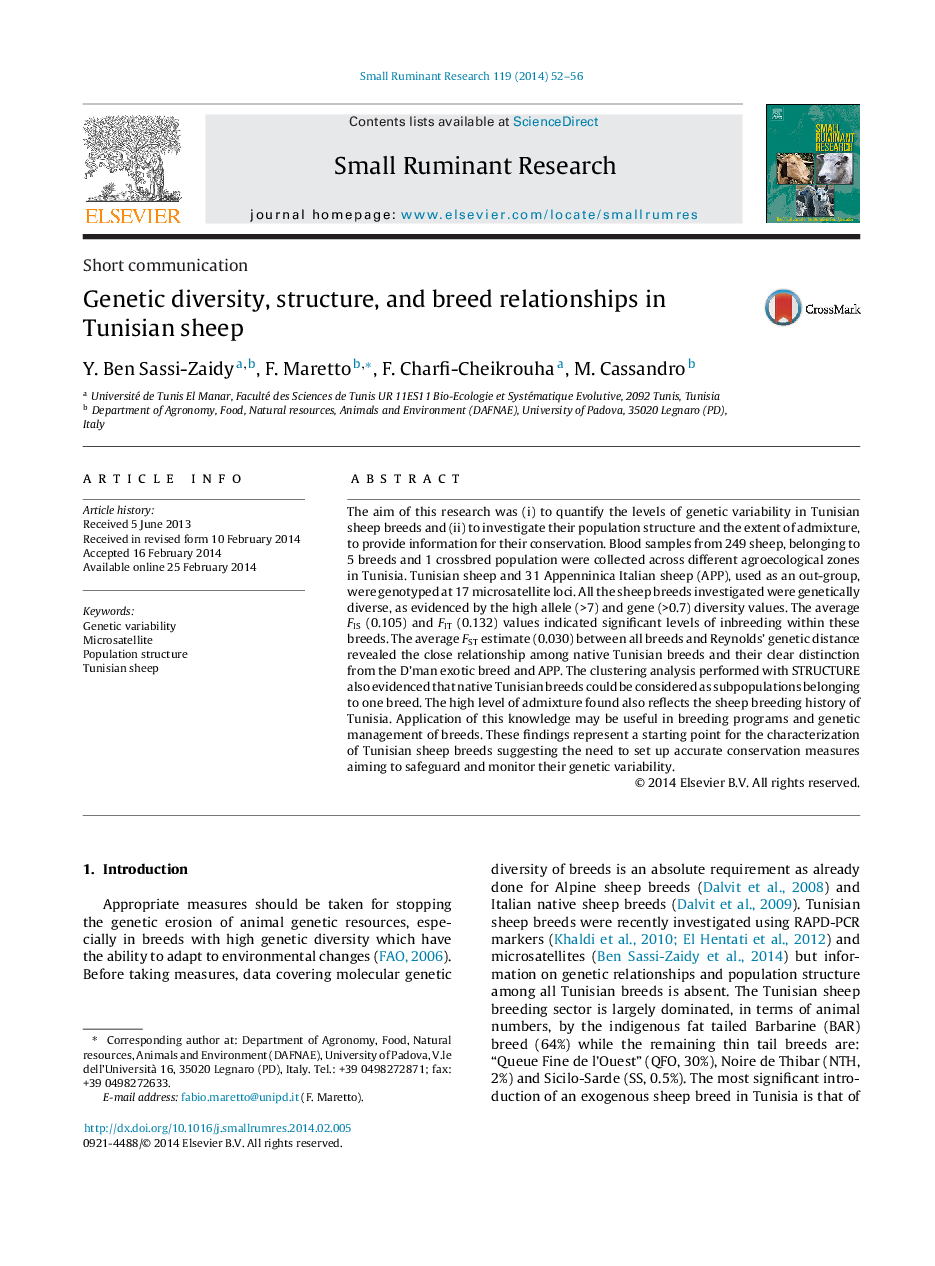| کد مقاله | کد نشریه | سال انتشار | مقاله انگلیسی | نسخه تمام متن |
|---|---|---|---|---|
| 5795699 | 1554373 | 2014 | 5 صفحه PDF | دانلود رایگان |
The aim of this research was (i) to quantify the levels of genetic variability in Tunisian sheep breeds and (ii) to investigate their population structure and the extent of admixture, to provide information for their conservation. Blood samples from 249 sheep, belonging to 5 breeds and 1 crossbred population were collected across different agroecological zones in Tunisia. Tunisian sheep and 31 Appenninica Italian sheep (APP), used as an out-group, were genotyped at 17 microsatellite loci. All the sheep breeds investigated were genetically diverse, as evidenced by the high allele (>7) and gene (>0.7) diversity values. The average FIS (0.105) and FIT (0.132) values indicated significant levels of inbreeding within these breeds. The average FST estimate (0.030) between all breeds and Reynolds' genetic distance revealed the close relationship among native Tunisian breeds and their clear distinction from the D'man exotic breed and APP. The clustering analysis performed with STRUCTURE also evidenced that native Tunisian breeds could be considered as subpopulations belonging to one breed. The high level of admixture found also reflects the sheep breeding history of Tunisia. Application of this knowledge may be useful in breeding programs and genetic management of breeds. These findings represent a starting point for the characterization of Tunisian sheep breeds suggesting the need to set up accurate conservation measures aiming to safeguard and monitor their genetic variability.
Journal: Small Ruminant Research - Volume 119, Issues 1â3, June 2014, Pages 52-56
